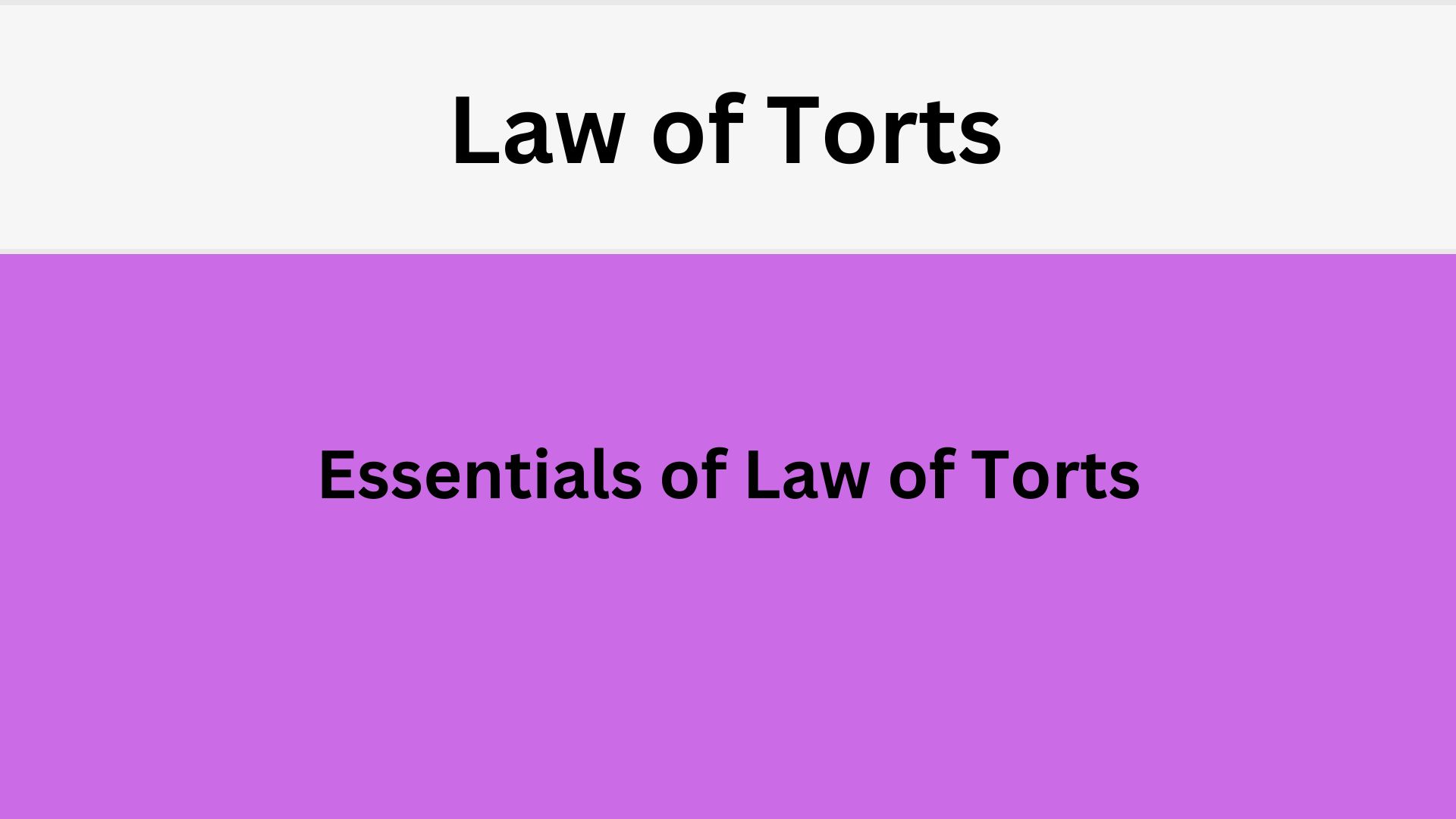Essentials of the Law of Torts
To establish a tortious liability, certain essential elements must be present. These essentials form the basis for a successful tort claim:
1. Wrongful Act or Omission
- The defendant must have committed an act or omission that is considered wrongful under the law. This can include both actions (e.g., hitting someone) and failures to act (e.g., failing to warn about a known danger).
2. Legal Damage (Injury) : Law of torts essential elements
- There must be some form of damage or injury to the plaintiff, which can be physical, emotional, economic, or reputational. Legal damage signifies a violation of the plaintiff’s legal right.
- Damnum Sine Injuria: Damage without legal injury (no tortious liability).
- Injuria Sine Damnum: Legal injury without actual damage (tortious liability).
3. Legal Right :Law of torts essential elements
- The plaintiff must show that their legal right has been violated. Tort law is primarily concerned with protecting these rights.
4. Causation
- There must be a direct causal link between the defendant’s wrongful act and the plaintiff’s injury. The harm suffered by the plaintiff should be a foreseeable result of the defendant’s actions.
5. Remedy
- The law of torts provides remedies to the injured party. The most common remedy is monetary compensation (damages). Other remedies include injunctions and restitution.
Detailed Explanation of Essentials:
1. Wrongful Act or Omission
- Action: A positive act that causes harm (e.g., assault, trespass).
- Omission: Failure to act when there is a duty to do so (e.g., a lifeguard failing to save a drowning person).
2. Legal Damage (Injury)
- Physical Harm: Injury to the body or property.
- Emotional Harm: Mental suffering or distress.
- Economic Harm: Financial loss.
- Reputational Harm: Defamation or damage to reputation.
3. Legal Right
- Personal Rights: Right to personal safety, liberty, and reputation.
- Property Rights: Right to possess and use property without interference.
- Economic Rights: Right to engage in trade or profession.
4. Causation
- Actual Cause: The defendant’s act must be the actual cause of the plaintiff’s injury (also known as “cause in fact”).
- Proximate Cause: The injury must be a foreseeable consequence of the defendant’s act (also known as “legal cause”).
5. Remedy : Law of torts essential elements
- Damages: Financial compensation to cover the loss or injury suffered by the plaintiff.
- Compensatory Damages: To compensate for actual loss or injury.
- Punitive Damages: To punish the defendant and deter future misconduct (rare in Indian law).
- Nominal Damages: A small sum awarded where a legal right is violated but no substantial harm is done.
- Injunction: A court order preventing the defendant from continuing a wrongful act.
- Restitution: Restoring the plaintiff to their original position before the wrongful act.
Examples of Torts in Indian Context:
- Negligence: A doctor failing to provide the standard of care, resulting in patient harm.
- Defamation: Publishing false information that damages someone’s reputation.
- Trespass: Entering someone’s property without permission.
- Nuisance: Polluting a river that harms nearby residents.

